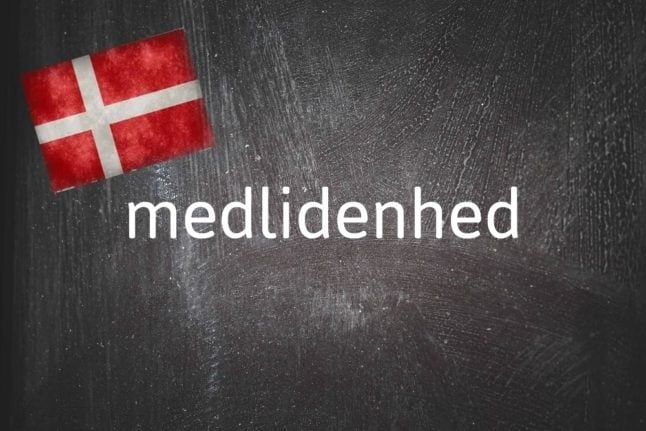What is medlidenhed?
Medlidenhed consists of three parts: med which means ‘co-‘ or ‘with’; lide which is the infinitive form of the verb “to suffer”, and hed, a suffix which turns an adjective into a noun (like -ness in English).
Its closest English equivalent is ‘compassion’, the act of feeling kind-hearted sympathetic concern or sadness for another person who is suffering or has been affected by some kind of misfortune.
You may recognise the lide component from the construction jeg kan ikke lide det, the rather clunky, but most common, way of saying “I don’t like it” in Danish. Literally translated, jeg kan ikke lide det means “I can’t suffer it”. Conversely, if you want to say ”I like it”, the standard phrase is jeg kan godt lide det – literally, “I can suffer it well”.
Why do I need to know medlidenhed?
Today its meaning is figurative, but in the old Norse languages it could also literally mean that a person shared an affliction with someone else, or for example that a body part was affected by pain elsewhere in the body.
The influence of this can be seen in the modern expression jeg føler med dig, “I’m feeling with you”, which indicates that you feel the other person’s pain, so strongly that you are even prepared to carry some of it in a philosophical sense.
The use of at føle (“to feel”) here is worth noting because it is a component of a similar word, medfølelse, which is a synonym to medlidenhed, but has a milder meaning which is closer to the English ‘sympathy’.
You could also say it’s a direct opposite to skadefryd, the sense of joy taken from another’s misfortune, a word which is loaned to many other languages in its German form, Schadenfreude.
Medlidenhed is a Nordic relative to the word ‘compassion’ (which is used in various forms in languages including English, French and Italian) in the sense that ‘compassion’ comes from the Latin com (‘with’, ‘together’) and pati (‘to suffer’, compare to for example ‘The Passion’ which in Christianity refers to the crucifixion and final period of the life of Jesus).
But because at lide is a modern word that – unlike ‘passion’ – is used to talk about suffering in everyday speech, medlidenhed perhaps comes across as more blunt and literal than its English equivalent.
Example
Der var en stor bølge af medlidenhed i den danske befolkning efter at nyhed om naturkatastrofen kom frem.
There was a wave of compassion throughout the Danish public after news broke of the natural catastrophe.



 Please whitelist us to continue reading.
Please whitelist us to continue reading.
Member comments